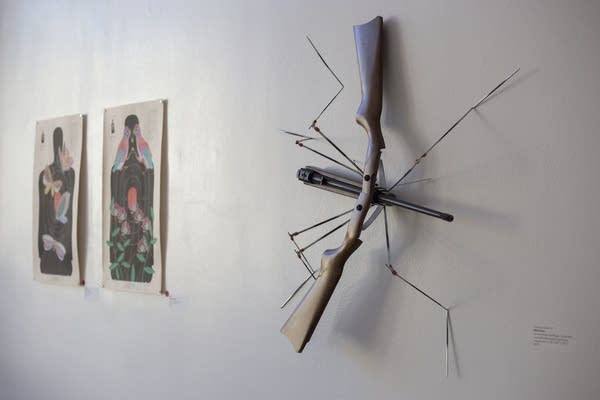In Mpls., busted-up guns become 'surreal' art exhibit

In the foreground, 'Disease Vector #1' by Mike Klein, on display Tuesday, Oct. 24, 2017 at Gamut Gallery in Minneapolis, Minn., as part of the Art is My Weapon: Creatively Addressing Violence exhibition. The show uses art to comment on controversy surrounding gun violence.
Ellen Schmidt | MPR News
Go Deeper.
Create an account or log in to save stories.
Like this?
Thanks for liking this story! We have added it to a list of your favorite stories.


